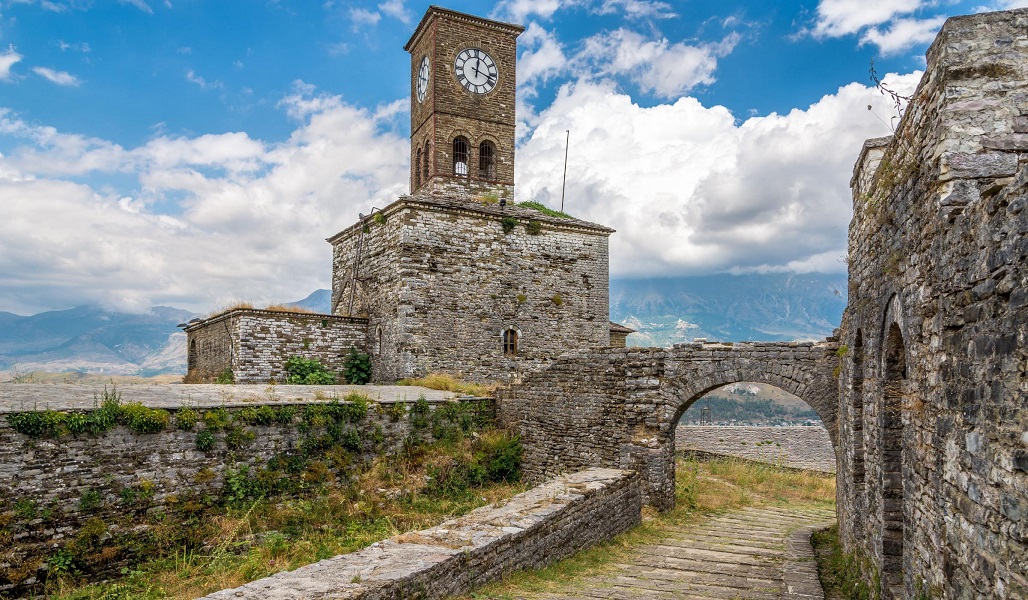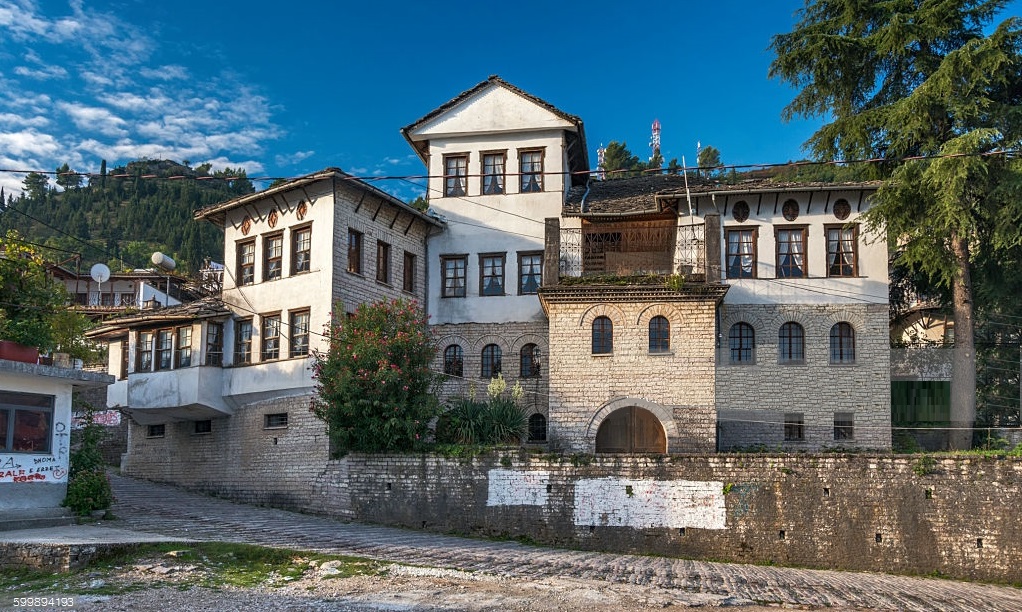Gjirokastra Castle is at the top of the hill, is billed as the second largest in all the Balkans, and is worth a look. The Armaments Museum is located in the castle (separate 200 Leke entrance) and contains a collection of mostly post-War era weapons, photographs and artwork: the main gallery, with its eerily lit corridor, contains two columns of large German and Italian field guns, remnants of WWII. The Castle also contains two Bektashi tekes, the stage for the internationally-renowned Gjirokaster National Folk Festival, a prison (now part of the Armaments Museum and available with an extra charge) and numerous chambers, some in ruins, open to exploration. A second museum gallery, the Zenebishi Gallery, features occasional free art exhibits. Underneath the castle is the recently discovered underground bunker built in the Cold War.

Gjirokastra Castle
The Old Bazaar
The old bazaar is still the social and commerical center of the Old Town of Gjirokaster. Though the newer sections of the city have attracted many businesses and people, the bazaar and its surrounding homes dating from the 18th, 19th and early 20th centuries still manages to capture a bit of the bygone era of Gjirokastrite life. Several of the houses are at various levels of restoration and are open to the public. Traditional houses include Cabej House, Kadare House, Topulli House, and Skenduli House. The Bazaar itself has recently undergone a cleaning and exterior restoration to preserve the cultural and historical values that it holds.


Ethnographic Museum
The ethnographic museum is situated in the Palorto Quarter, which is the best preserved district in the old town of Gjirokastra. The museum building was constructed in 1966 after the original house was destroyed by fire. From 1966 to 1991 the building served as the Anti-Fascist Museum. In 1991 the exhibits from the previous Ethnographic Museum were moved into this space. The house has four floors, all of which are open to the public. The rooms are arranged as they would have actually been used and are decorated with numerous household items, folk costumes and cultural artefacts typical of a wealthy Gjirokastra family of merchants or Ottoman administrators living in the 19th Century.



